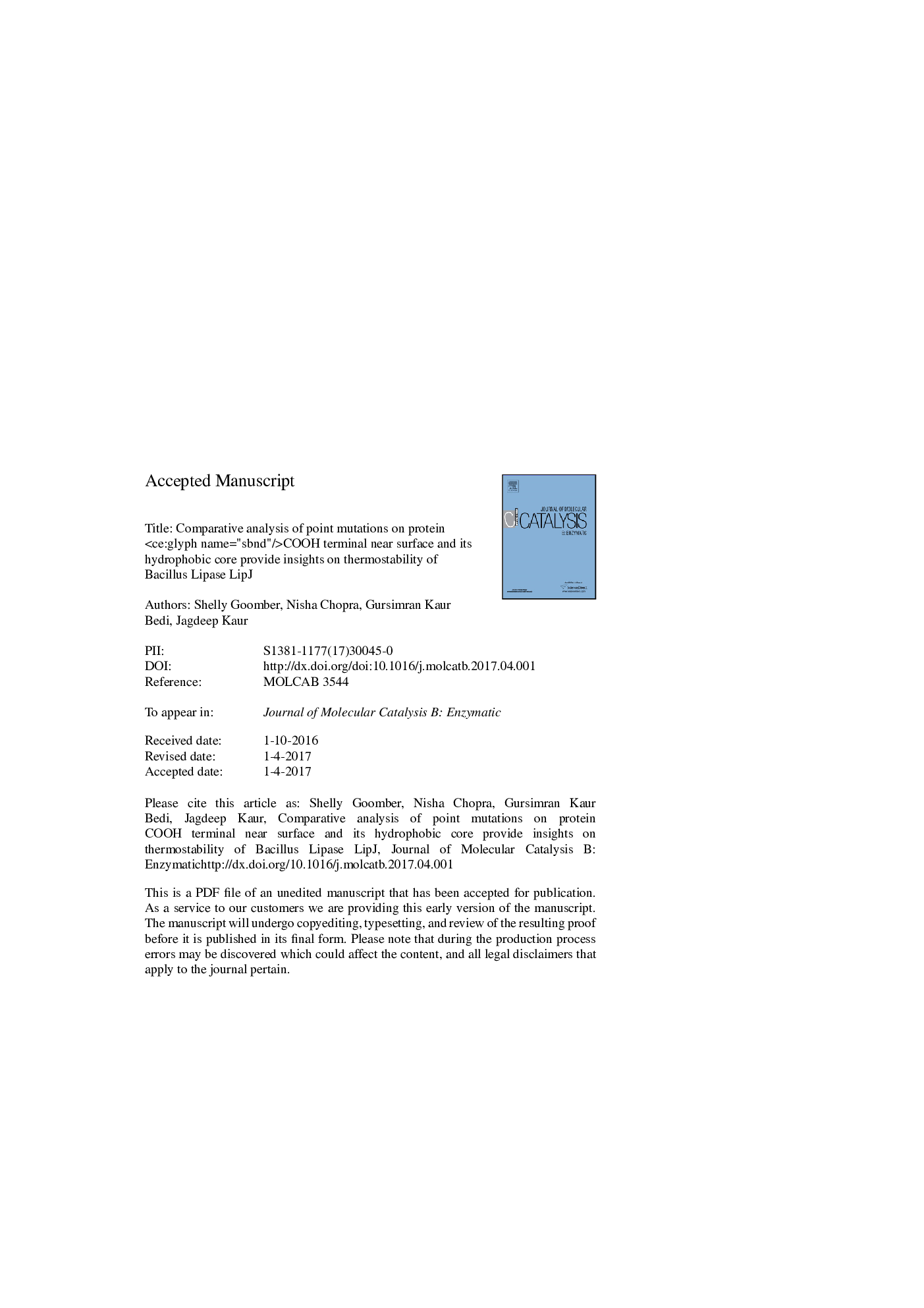| Article ID | Journal | Published Year | Pages | File Type |
|---|---|---|---|---|
| 6530960 | Journal of Molecular Catalysis B: Enzymatic | 2016 | 20 Pages |
Abstract
Amino acid composition, protein conformation, weak interactions are some of the factors determining protein stability. Two point mutants of Bacillus LipJ (Ala81Tyr and Asn166Tyr) were designed and generated for comparison. Residue Ala81 targeted for substitution was buried in protein core with 0% accessibility. On other hand, residue Asn166 at protein COOH terminal was predicted to be located within αF helix near surface. Point variants Ala81Tyr and Asn166Tyr were generated by site directed mutagenesis. In comparison to native protein LipJ, point variant Ala81Tyr was observed to be more thermostable and demonstrated 1.6 times relative activity after 1 h exposure at 50 °C. However, point variant Asn166Tyr showed dramatic shift in its thermostability, specific activity and substrate specificity pattern compared to wild type LipJ. Asn166Tyr variant was found to remain stable for hours at 50 °C. Specific activity of Asn166Tyr was 20% of parent enzyme. Substrate specificity of Asn166Tyr was significantly shifted to fatty acyl chains of shorter lengths. Homolog modelling predicted global vs local structure change to explain molecular basis of differential behavior of point variants Asn166Tyr and Ala81Tyr respectively.
Keywords
Related Topics
Physical Sciences and Engineering
Chemical Engineering
Catalysis
Authors
Shelly Goomber, Nisha Chopra, Gursimran Kaur Bedi, Jagdeep Kaur,
